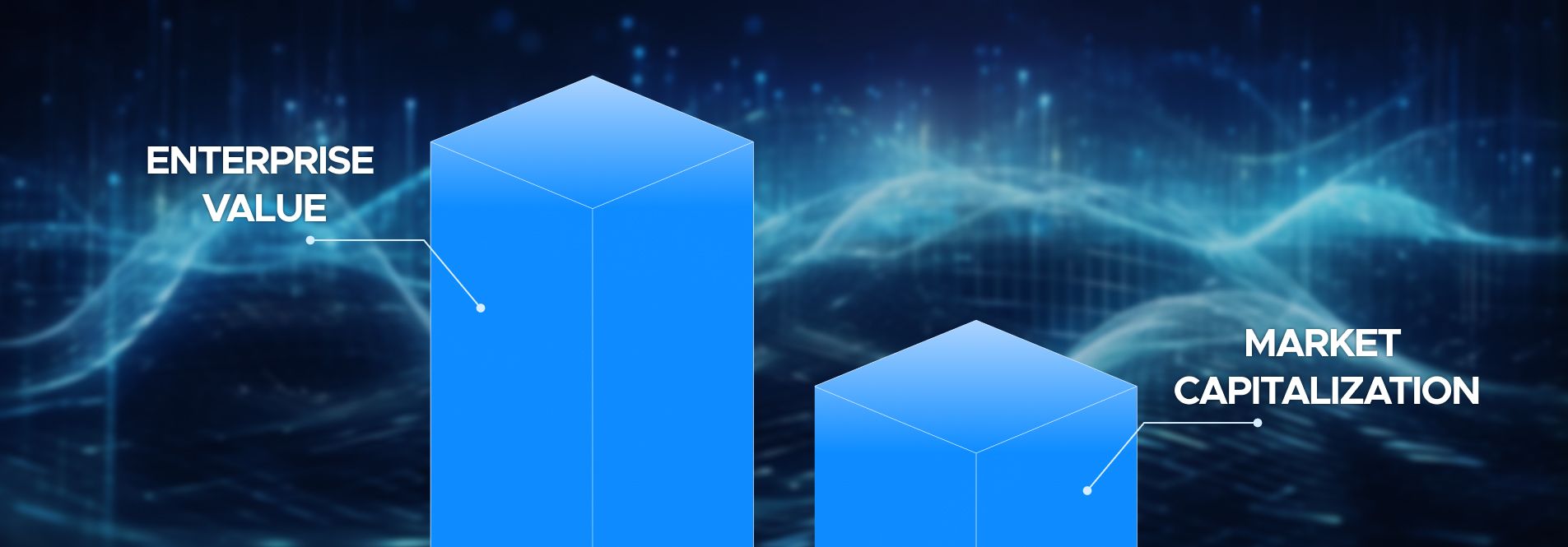Securing capital is one of the most critical determinants of a startup’s viability and growth trajectory. Whether you're developing a novel technology or building a hyperlocal service, understanding the mechanics of fundraising is essential to turning a concept into a scalable business. This guide provides a clear, actionable framework for navigating startup funding, detailing essential stages, strategic considerations, and decision points every founder must address. With data-driven insights and current best practices, it equips you to approach capital acquisition with precision and confidence.

Strategic Capital Sourcing for Startups
Capital sourcing involves identifying and acquiring the financial resources necessary to develop, scale, or stabilize a business. For startups, funding typically supports product development, customer acquisition, operational infrastructure, and talent recruitment. These funds can originate from founders’ savings, angel investors, venture capital, crowdfunding, government grants, or institutional loans.
An effective capital strategy aligns closely with the startup’s lifecycle stage and growth model. For early-stage ventures, clarity around market need, unique value proposition, and go-to-market plan is essential. Investors assess not only the business model but also the team’s capability, traction metrics, and scalability potential. A data-backed business plan that presents a credible path to revenue and long-term profitability significantly increases your chances of securing investment.
The Funding Journey: Stages of Growth
Startups evolve through unique funding chapters, each tied to milestones that shape investor interest and financing options, steering your approach to raising capital.
Seed Stage: Planting the Roots
Seed funding sparks the earliest phase of a startup’s adventure, empowering founders to craft prototypes, probe markets, and assemble a stellar team. For those pondering how to raise money for starting a business, this stage often taps personal savings, support from trusted allies, or pioneering angel investors. Investments typically span $10,000 to $2 million, depending on the field. Here, vision trumps revenue—a magnetic pitch, a functional demo, or a vivid proof of concept is crucial, as backers invest in the team’s promise and future potential.
Series A, B, and Beyond: Scaling New Heights
Once a startup proves its market mojo, it steps into Series A, B, and later rounds to amplify growth. Series A—ranging from $2 million to $15 million—sharpens products, solidifies revenue streams, and broadens customer reach. Series B and beyond power swift expansion, global market dives, or bold acquisitions, often fueled by venture capital firms trading hefty sums for equity. To win these investments, startups must flaunt robust metrics, like surging user numbers, revenue momentum, or economics primed for scale.
IPO: Stepping into the Public Spotlight
An Initial Public Offering (IPO) catapults a startup into a publicly traded entity, raising blockbuster capital by selling shares to the masses. This path fits seasoned companies with steady revenue and market clout. IPOs unlock liquidity for early backers but require ironclad transparency and regulatory rigor. For most startups, an IPO is a distant summit reached after years of climbing.

Debt vs. Equity: Charting Your Funding Course
The debt-versus-equity decision shapes your startup’s destiny. Debt means borrowing funds, repaying them with interest, and keeping ownership intact but demanding reliable cash flow. Equity involves trading ownership stakes, easing repayment burdens, but diluting control. Debt fits ventures with steady income, while equity suits high-octane startups craving flexibility. If you’re wondering how to raise money for a startup, weighing your financial horizon, risk appetite, and long-term vision is key to picking the perfect path for raising capital.
Equity Financing: Partnering for Growth
Equity financing trades ownership slices for capital from angels, venture capitalists, or public markets through IPOs. Startups gain resources to turbocharge growth without instant repayment, while investors snag shares, betting on future dividends or stock surges. This path demands a razor-sharp pitch, clear valuation, and airtight legal deals. Equity delivers big funds but requires balancing reduced control with the strategic firepower investors offer.
Debt Financing: Borrowing with Autonomy
Debt financing involves loans from banks, credit unions, or digital platforms, repaid with interest over time. It safeguards ownership, appealing to founders dodging dilution, but mandates regular payments that can stress early cash flow. Debt shines for startups with solid revenue or assets to secure loans. Perks include full control and tax-deductible interest; pitfalls involve repayment duties and potential collateral demands.

8 Trailblazing Strategies to Secure Capital
Startups and scaling businesses can harness a spectrum of strategies to unlock funding. Each tactic aligns with specific stages, industries, and goals, delivering distinct upsides.
Bootstrapping: Building from the Ground Up
Bootstrapping channels personal savings or revenue into growth, preserving ownership and sidestepping debt or equity dilution. Founders reinvest profits, running lean operations. Perfect for early ventures with low overhead, it curbs rapid scaling but cultivates grit and independence.
Business Loans: Borrowing for Breakthroughs
Loans from banks or fintech lenders provide capital for gear, inventory, or expansion. Secured loans demand collateral, while unsecured ones lean on credit strength. Loans deliver predictable terms but require repayment regardless of revenue, fitting startups with steady cash or assets.
Crowdfunding: Igniting Public Passion
Platforms like Indiegogo or GoFundMe let startups raise funds from countless small donors via rewards, equity, or debt models. Winning requires gripping narratives and savvy marketing. Crowdfunding thrives for consumer goods but demands hustle to shine and deliver on pledges.
Angel Investors: Early Vision Backers
Angel investors, high-net-worth individuals, inject $25,000-$500,000 for equity, often pairing funds with mentorship. They champion high-potential ideas, requiring a standout pitch deck and relationship finesse to earn their backing.
Grants and Competitions: Capital Without Compromise
Grants from governments, nonprofits, or corporations, plus startup contests, offer funding without repayment or equity trade-offs. Targeting fields like biotech or clean energy, these demand thorough applications but deliver free capital for bold ideas.
Venture Capital: Rocket Fuel for Growth
Venture capital firms pour $1-50 million into startups with proven traction and scalable blueprints, taking equity and often strategic roles. A killer business plan and dazzling metrics are vital to snag VC funds for product rollouts or market leaps.

Private Equity: Powering Mature Players
Private equity firms invest in established ventures, often for acquisitions or pivots. Offering massive capital, PE demands alignment with investor visions and shared control, making it rarer for early-stage startups.
Share Issues and Rights Offerings: Growing Through Ownership
Issuing new shares to existing investors or the public, or offering rights to current shareholders, raises capital for expansion. These tactics suit mature or public firms but require navigating legal and regulatory waters.
Prepping for a Blockbuster Fundraising Campaign
A stellar fundraising effort starts with relentless preparation, proving to backers you’re strategic and primed for success. If you’re exploring how to raise money for a startup company, these steps will forge a rock-solid foundation:

Forge a Game-Changing Business Plan
Build a vibrant plan detailing:
Market opportunity and scope.
Revenue engine and growth tactics.
Financial forecasts (3-5 years).
Competitive edge and unique spark.
This plan fuels your fundraising story, showcasing your market mastery.
Craft a Showstopping Pitch Deck
Design a sleek, 10-15 slide deck that pops, covering:
Problem and your genius fix.
Product snapshot or demo.
Market size and traction.
Business model and team firepower.
Funding needs and spending plan.
Tailor it to your audience—angels, VCs, or lenders—spotlighting why your startup is a must-back.
Zero In on Ideal Backers
Target investors or lenders matching your industry, stage, and funding scale. Use tools like LinkedIn or Dealroom to scout prospects, studying their investments to customize your pitch.

Polish Your Financial Story
Deliver transparent, tidy financials, including:
Revenue and cost breakdowns.
Cash flow snapshots.
Cap table and projections
Crisp financials speed up due diligence and cement trust.
Team Up with Expert Guides
Partner with legal and financial pros to:
Structure deals (e.g., SAFE, convertible notes).
Vet term sheets.
Navigate regulations.
Tackle tax and shareholder details.
Early expertise dodges costly pitfalls.
Lock Down Your Intellectual Property
Shield your idea by:
Filing patents or trademarks.
Securing IP rights from collaborators.
Ensuring no legal overlaps.
Robust IP lifts valuation and eases investor concerns.
Nail Your Pitch Performance
Rehearse your pitch to ace questions on:
Valuation and funding goals.
Growth and customer strategies.
Burn rate and runway.
Risks and countermeasures.
Exit possibilities.
Tap mentors for feedback to sharpen your edge.
Relentless prep smooths your fundraising path. Bold planning, vivid storytelling, and polished execution ignite the trust that opens wallets.
Conclusion
Raising capital for a startup isn’t just about a killer idea—it’s about strategic hustle, adaptability, and a crystal-clear mission. Whether you’re bootstrapping, chasing VC millions, or rallying a crowdfunding army, your funding game plan must sync with your venture’s stage, needs, and dreams. For founders diving into how to raise capital for a startup, decoding funding paths, balancing debt and equity, and wielding the right tools at the right moment is everything. Kick off with a fierce plan, build unshakable investor faith, and charge toward turning your vision into a bold, enduring business.
FAQ
How do small businesses raise capital?
Small businesses draw from personal savings, loans, angel investors, crowdfunding, or grants. Bootstrapping and loans kick things off, while equity powers growth-hungry ventures.
How do most startups get funding?
Startups often launch with seed funds from founders, friends, or angels, then scale with venture capital. Crowdfunding and grants shine for unique or innovative projects.
Can a new LLC get funding?
Absolutely, a new LLC can tap bootstrapping, loans, angels, or crowdfunding. A tight business plan and solid credit boost chances, though revenue-free options may be slim.
How much money should a startup raise?
It depends on the stage: seed ($10,000-$2 million), Series A ($2-15 million). Aim for 12-18 months of runway, balancing growth ambitions with financial stamina.







